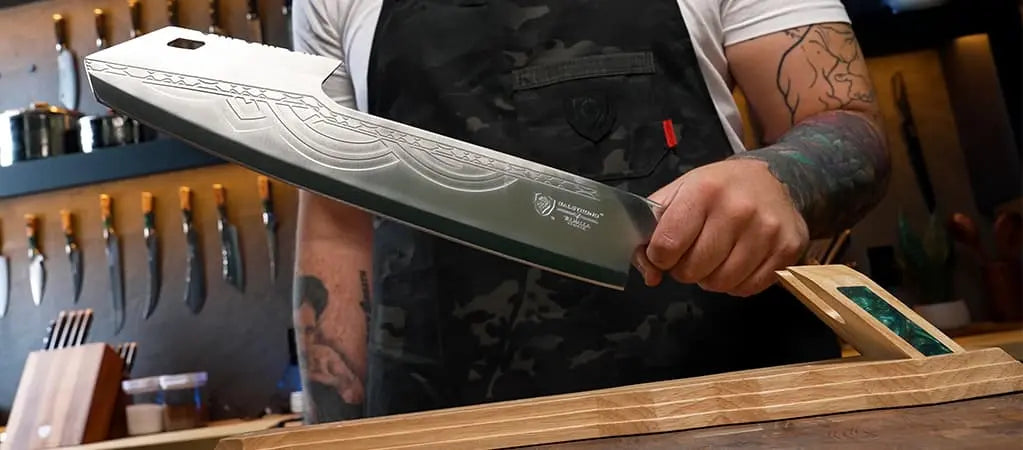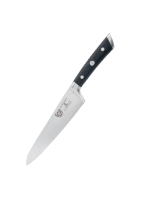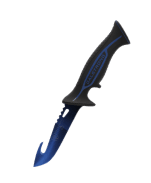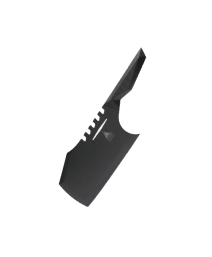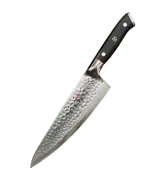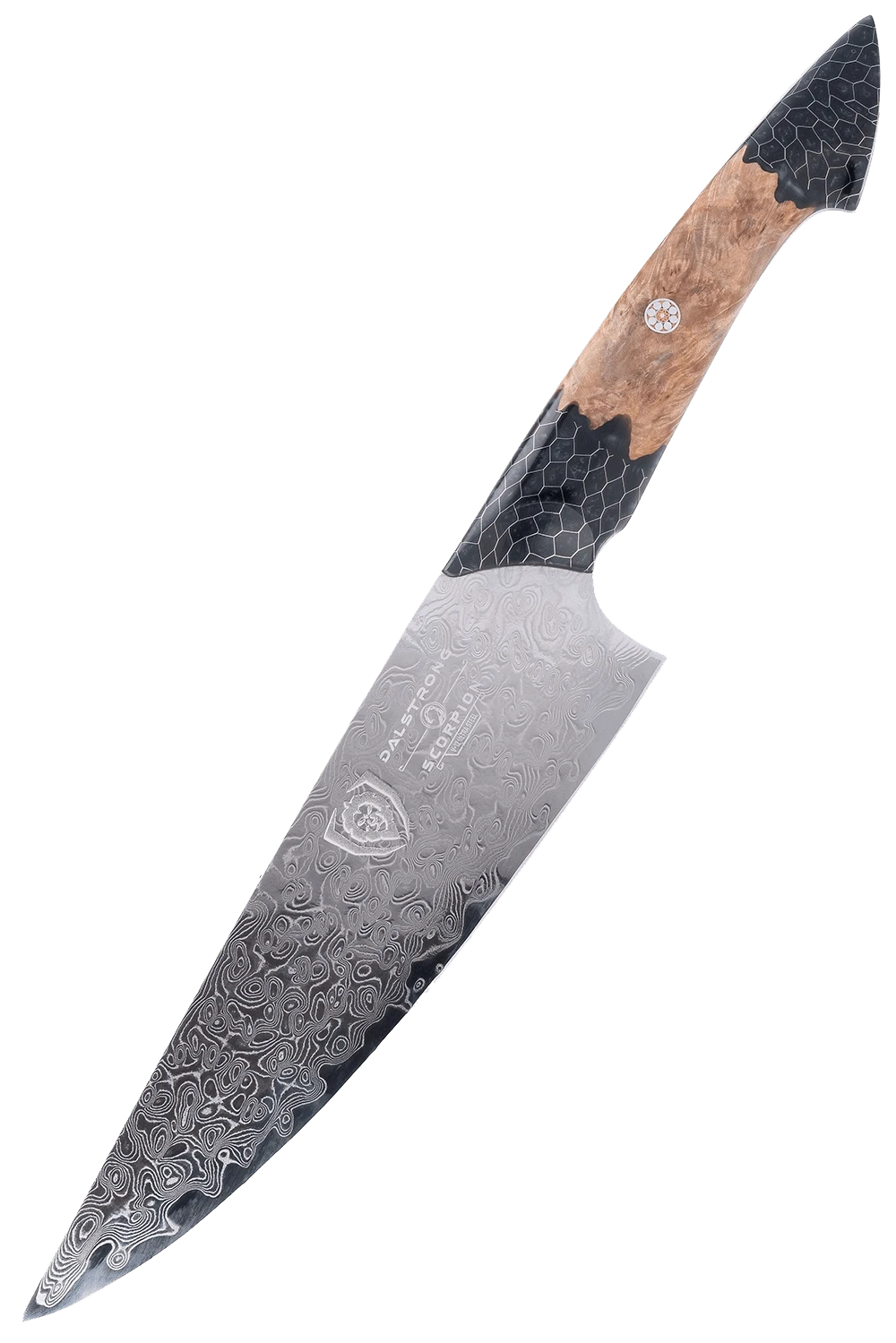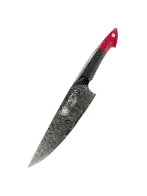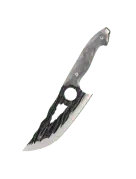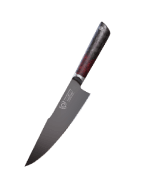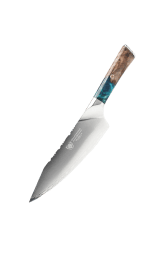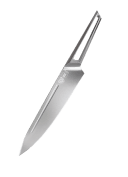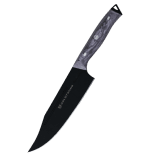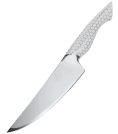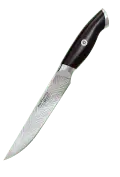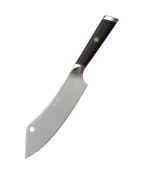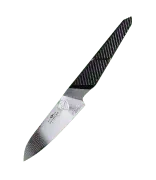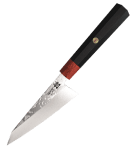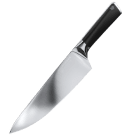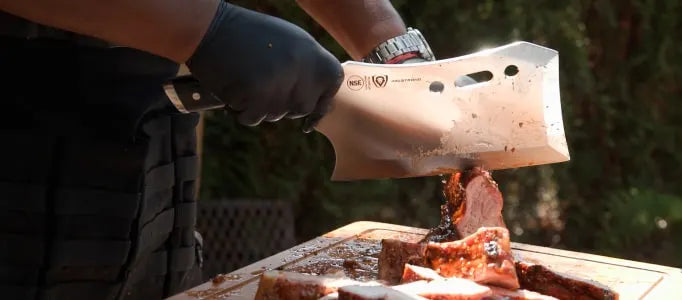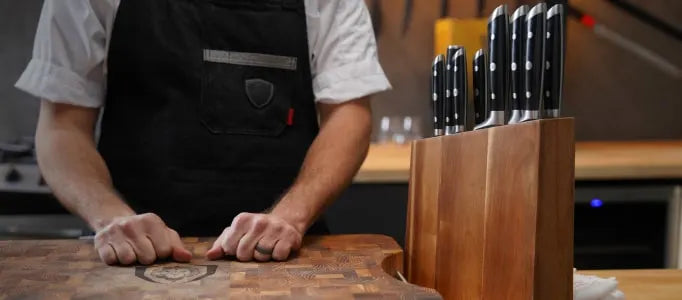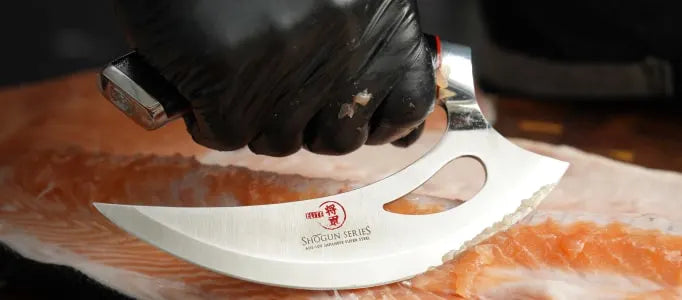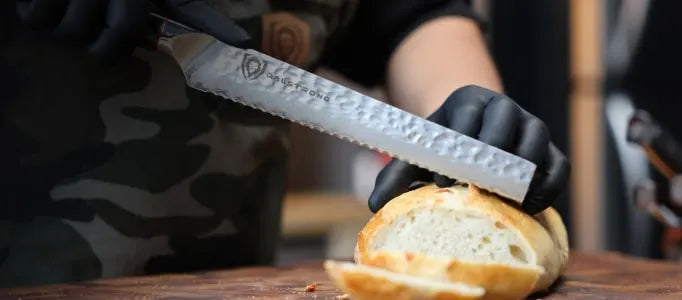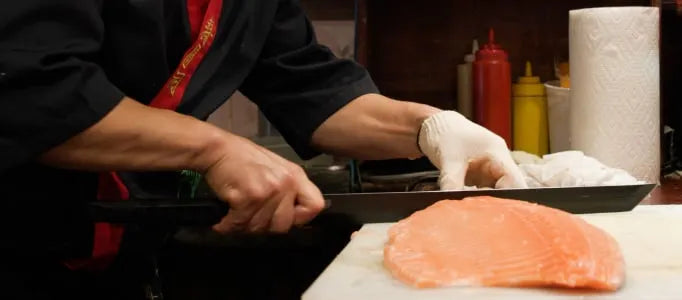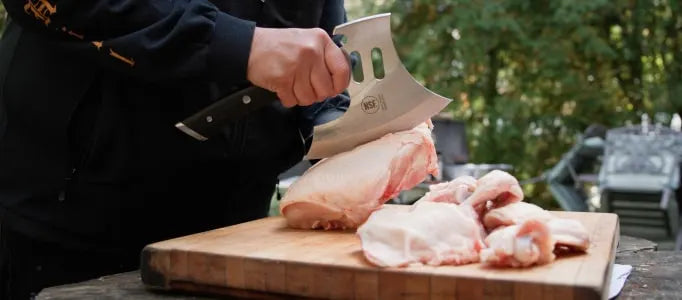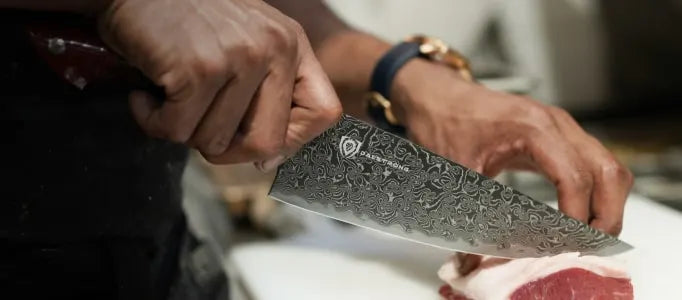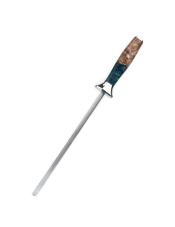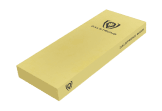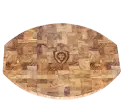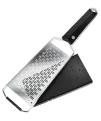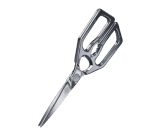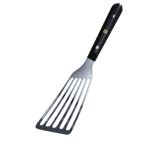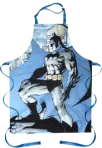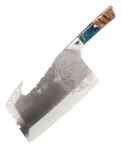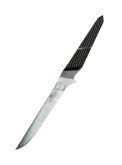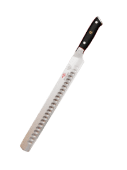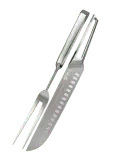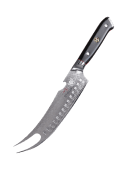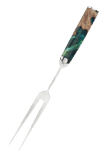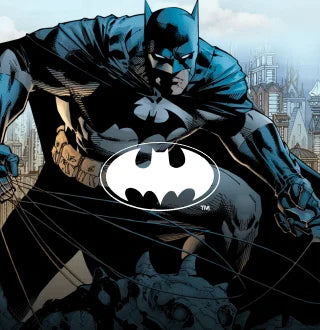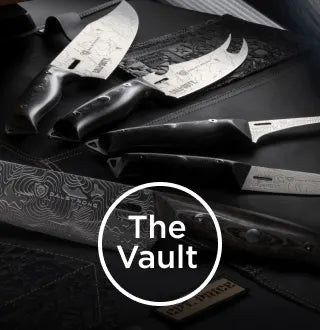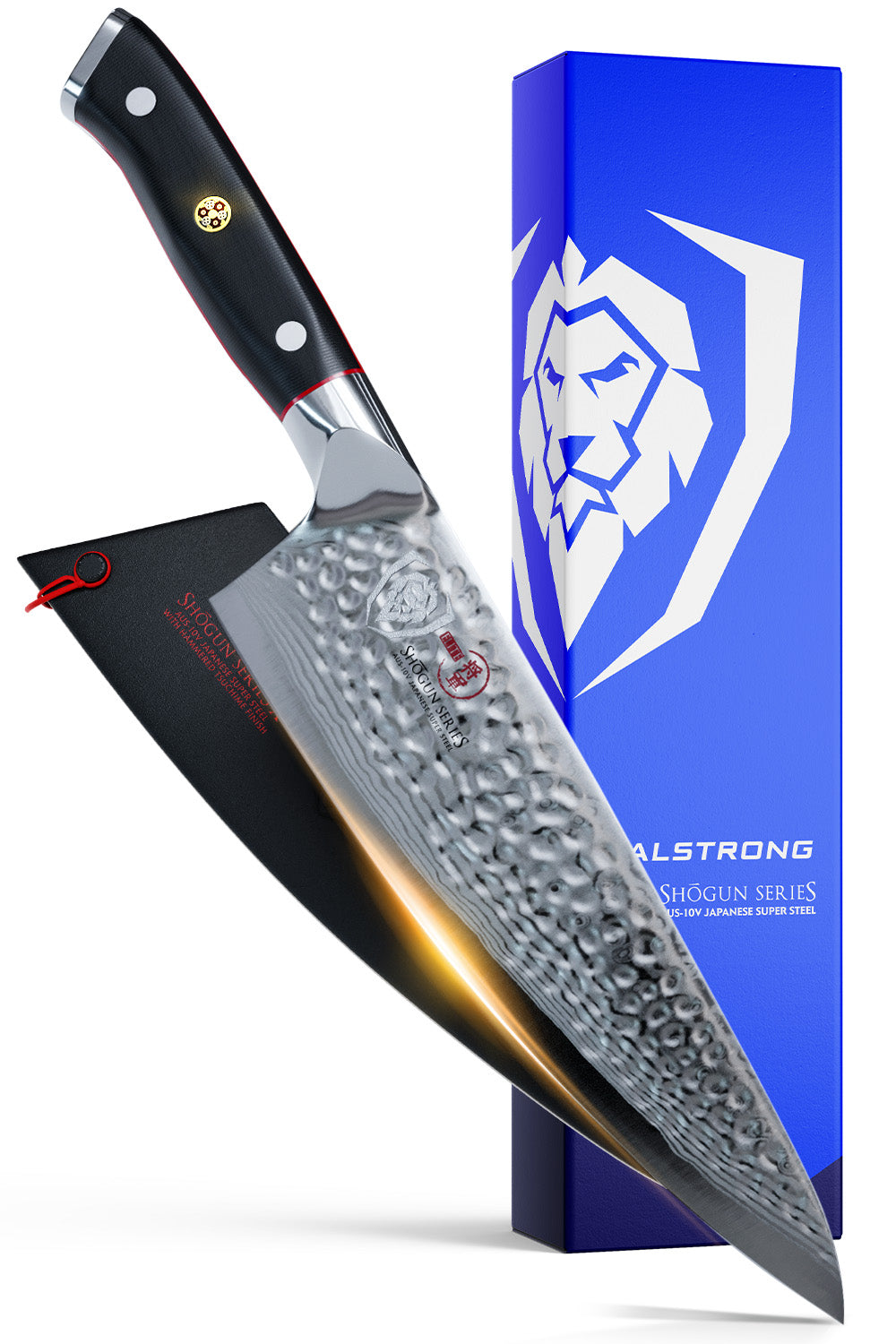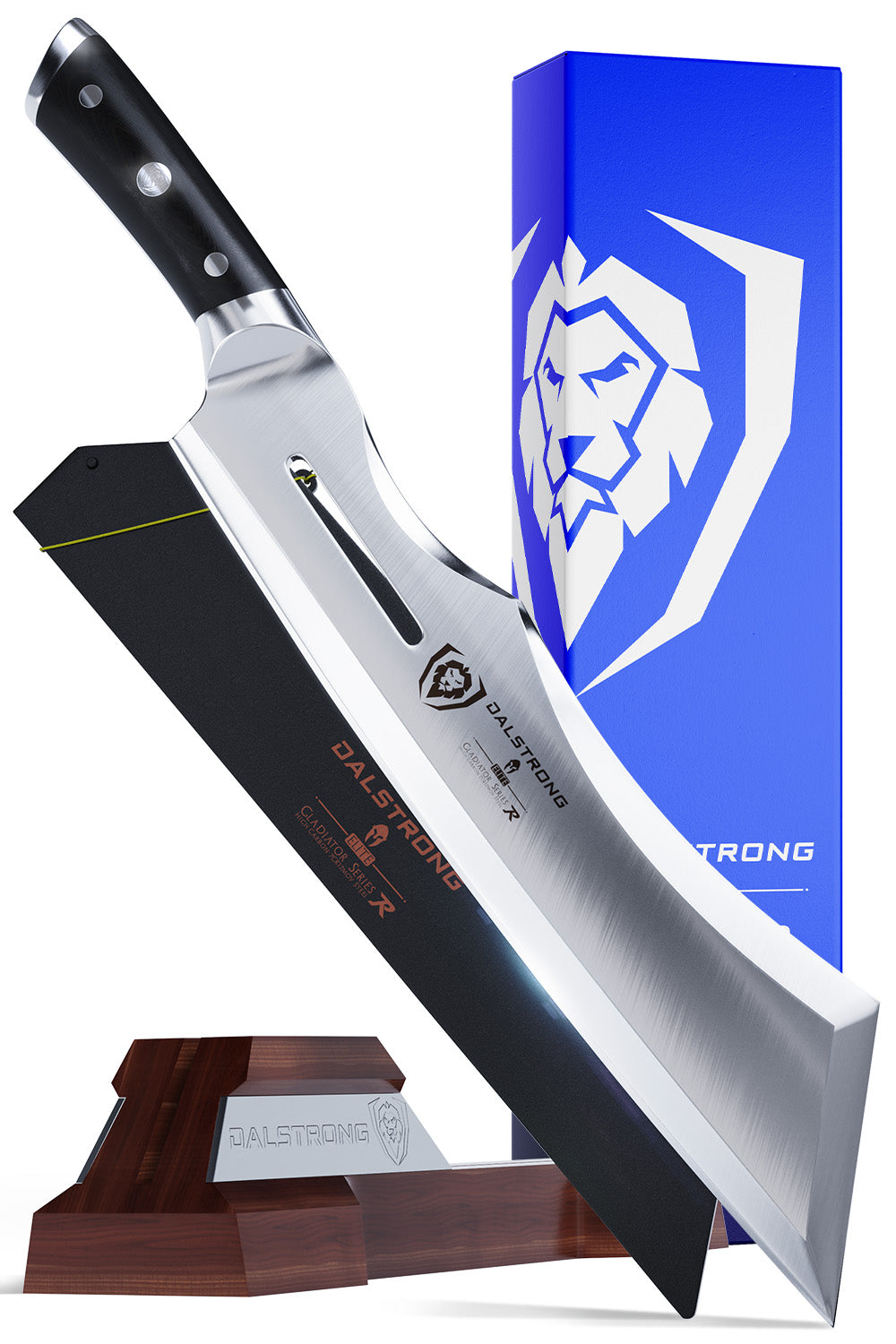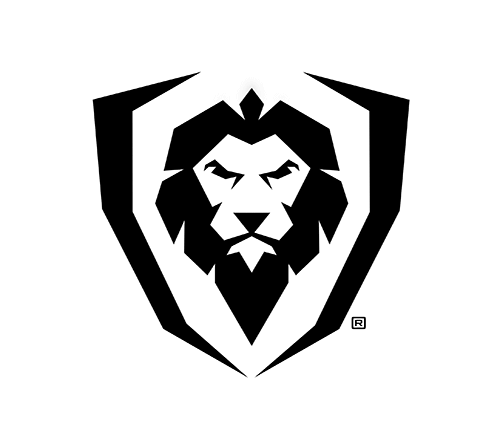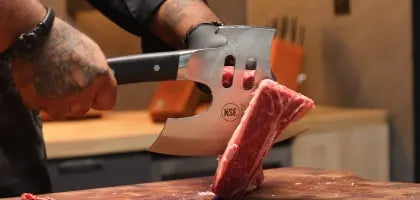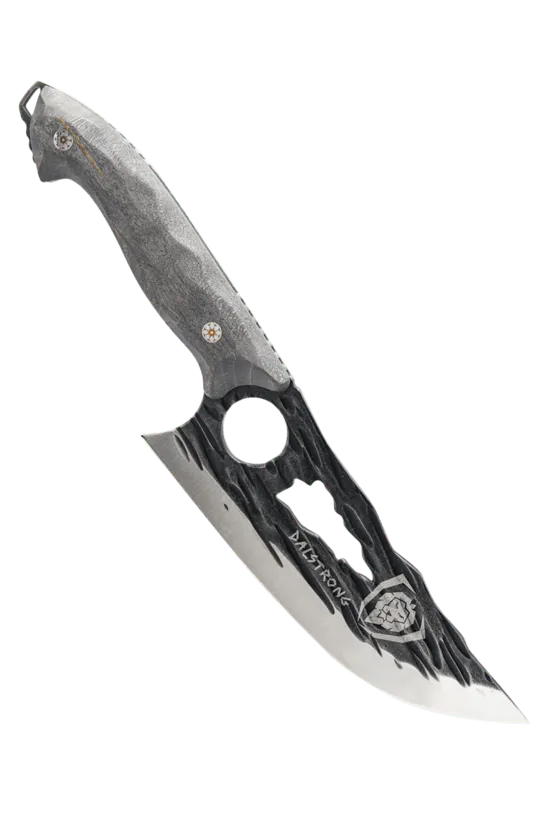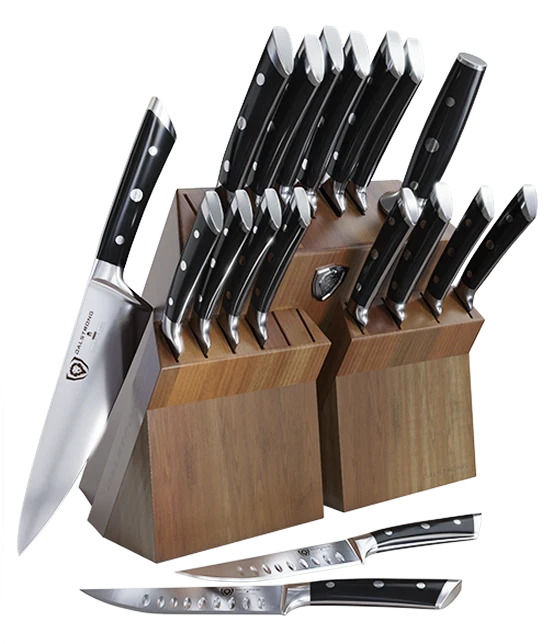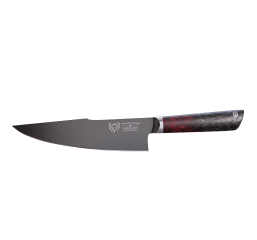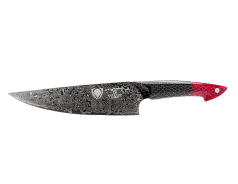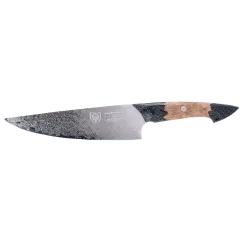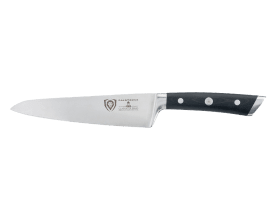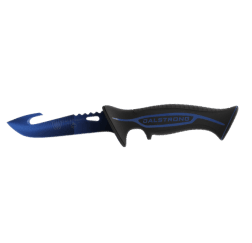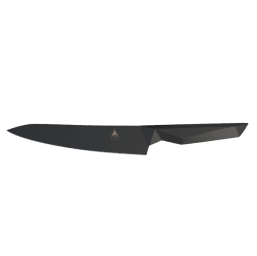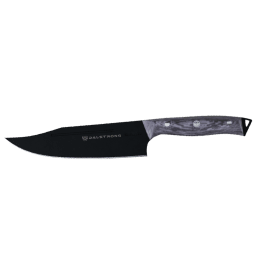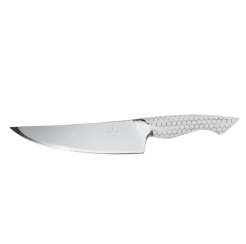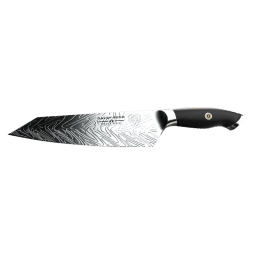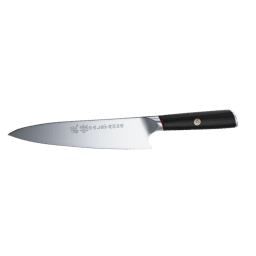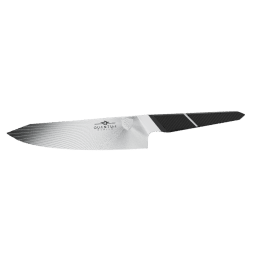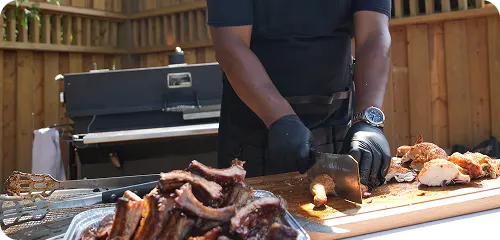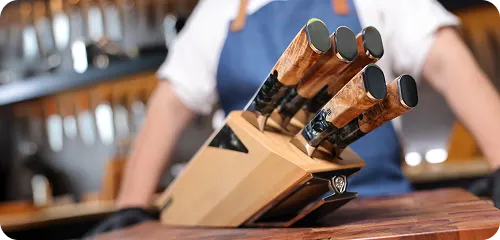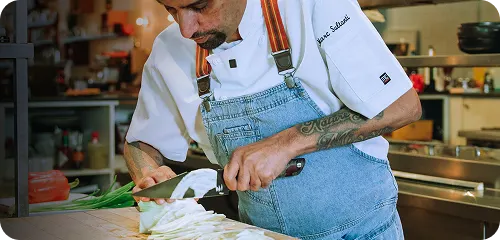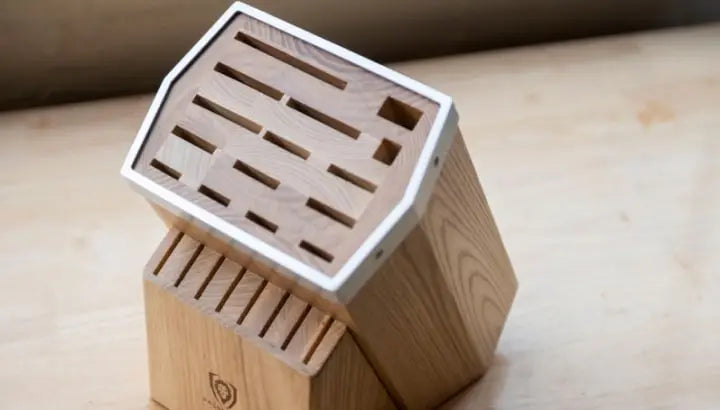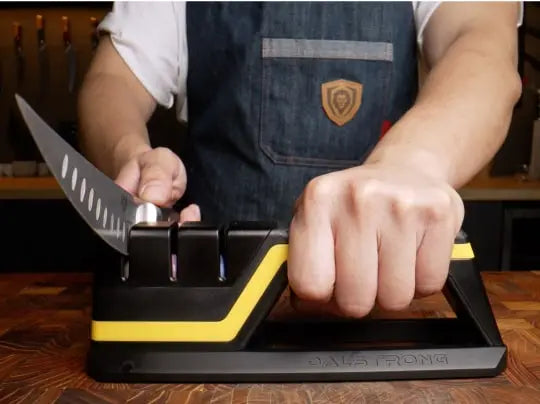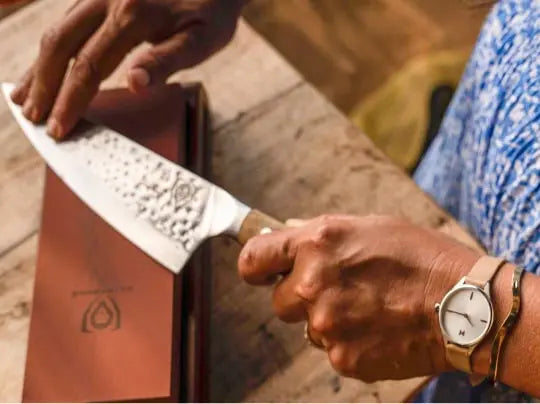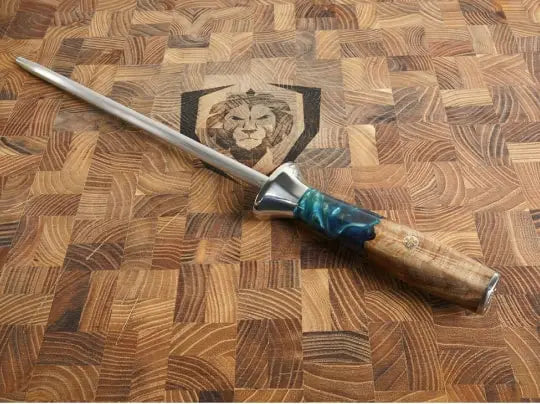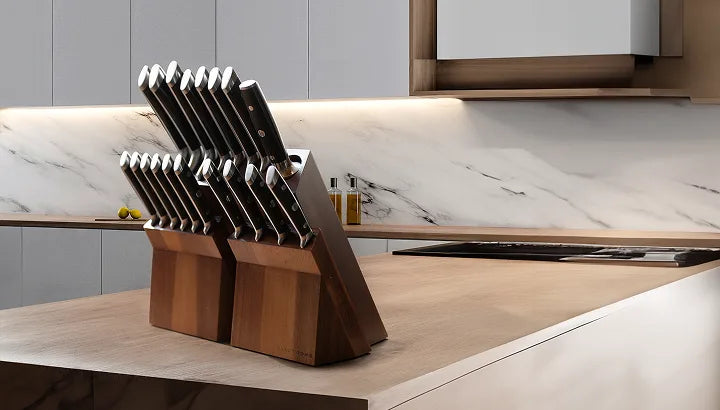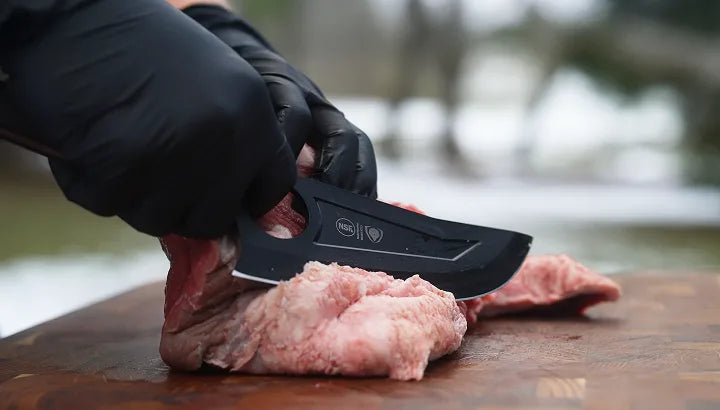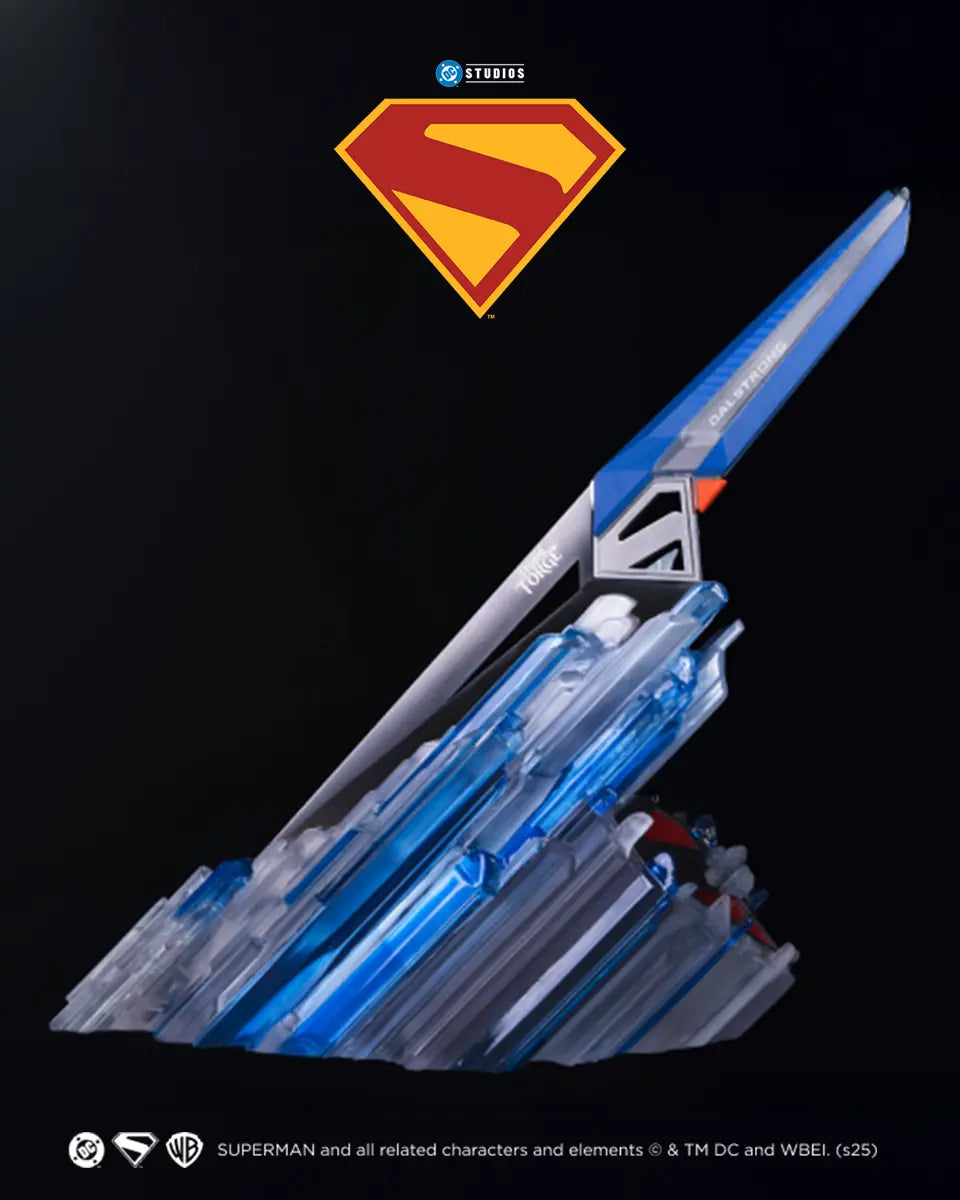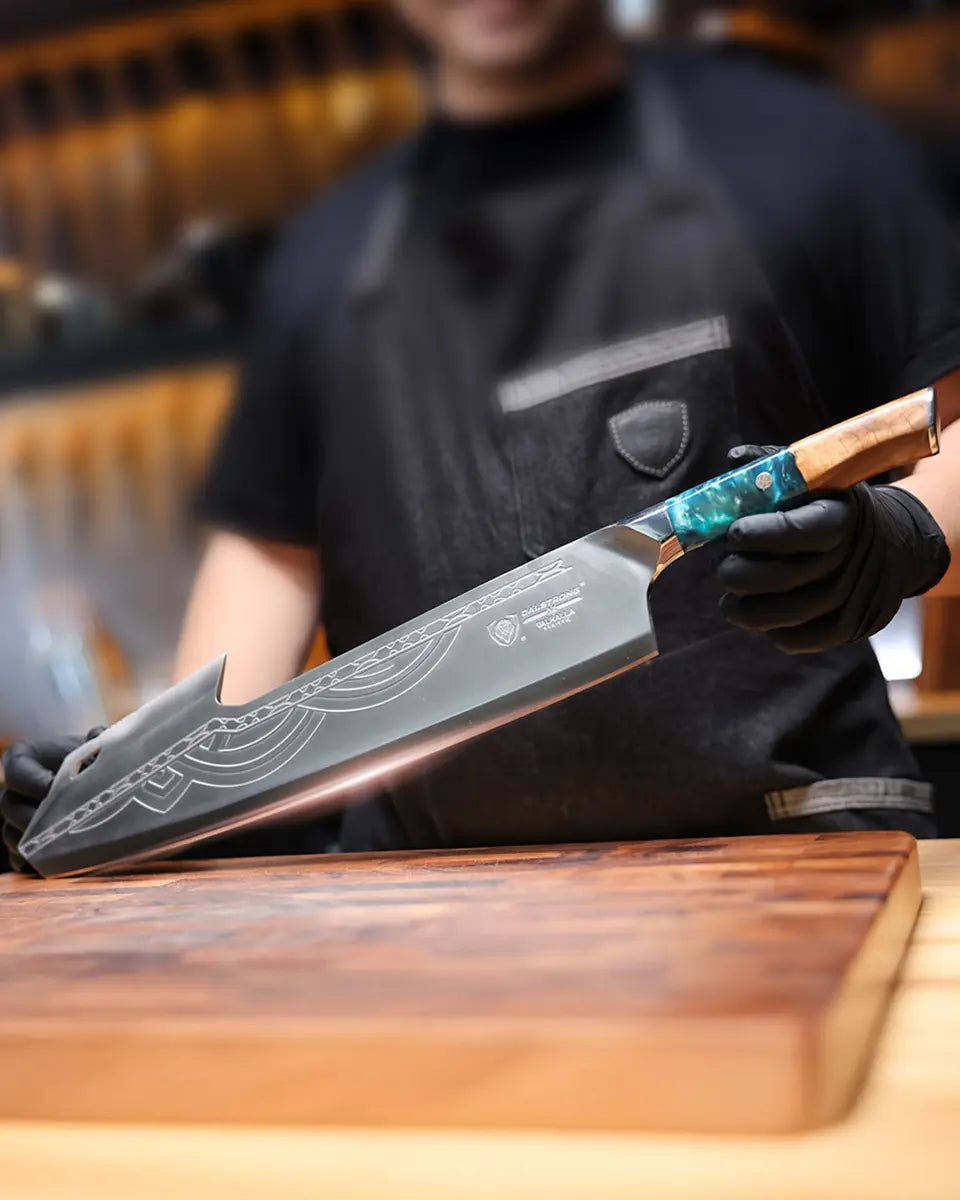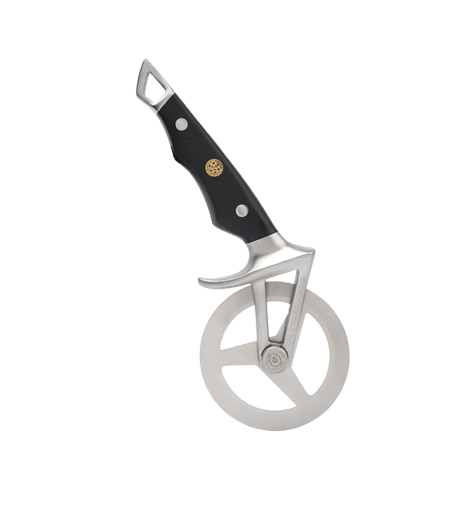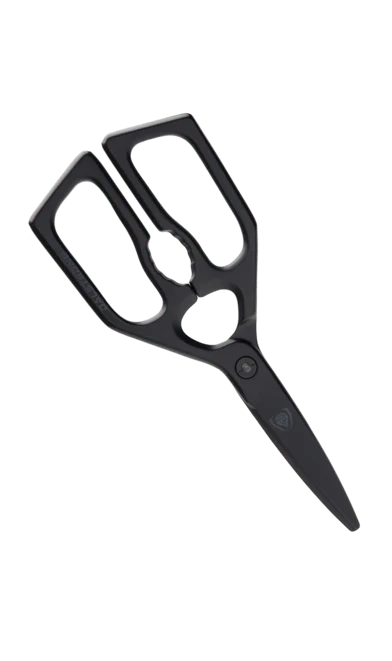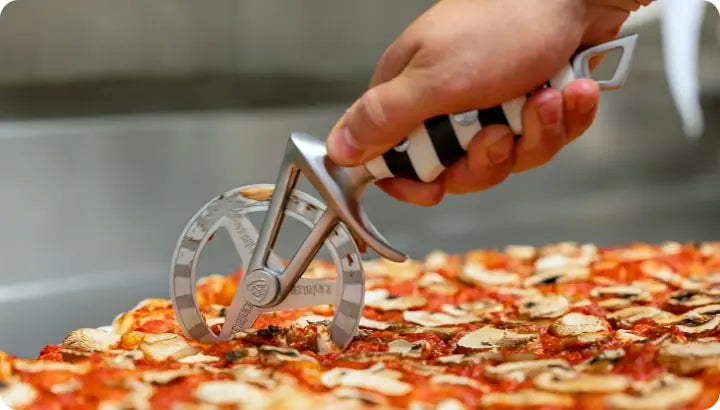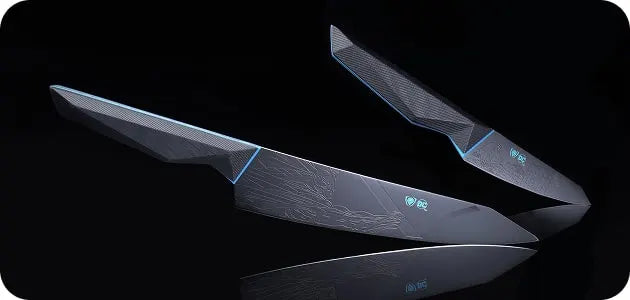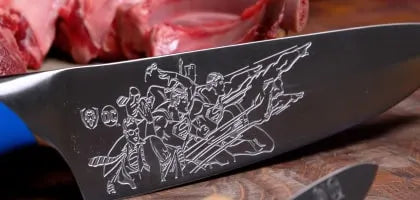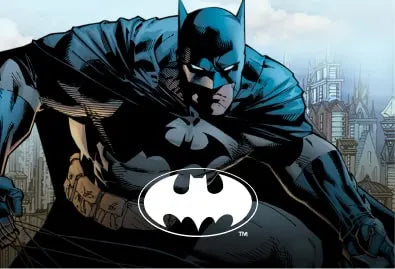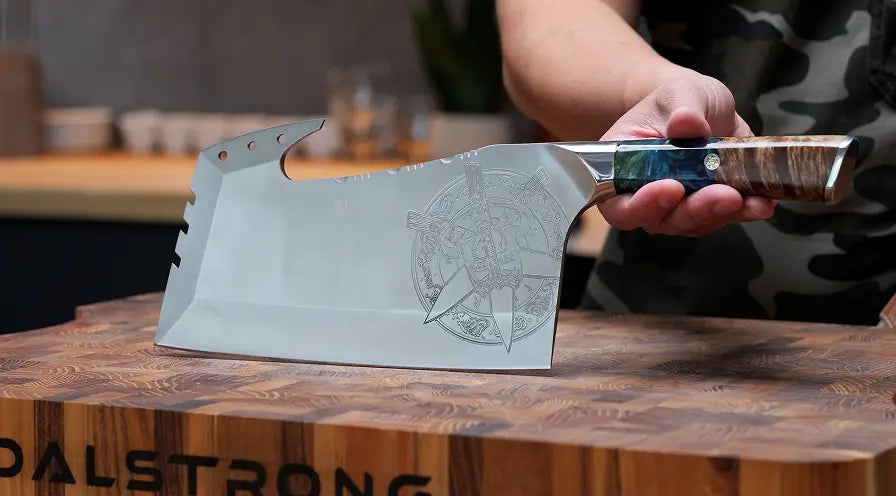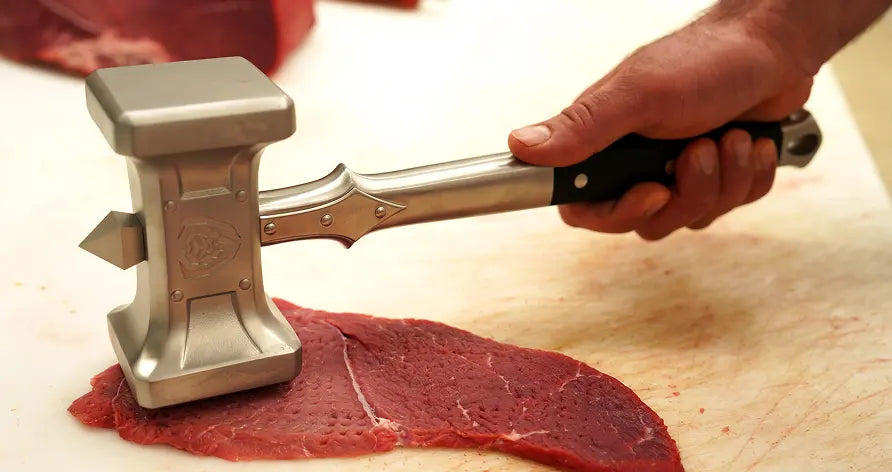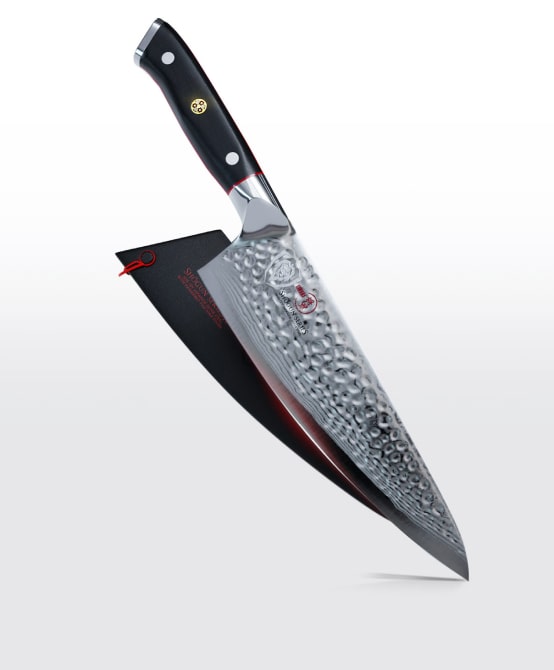 4 Piece Cheese Knife Set | Shadow Black Series | Dalstrong ©
4 Piece Cheese Knife Set | Shadow Black Series | Dalstrong ©
When I think of charcuterie boards, I am instantly reminded of the burst of flavors on an elegant piece of Teak wood cutting board. Come to think of it, every piece of cheese, crackers, sweet treats, and cured meat is an expression of the world’s cuisines. If you, like me, consider cooking a stress buster, then making your version of a charcuterie board is going to elevate your inner Dalstrong Pro more than ever.
In this detailed guide, I’ll be walking you through everything you need to know to make the perfect charcuterie board, the best meats and types of cheeses that go on it, how to preserve a balance of flavors, and most importantly, the significance of good cutting boards.
1. What Are Charcuterie Boards?
Assembling a charcuterie board is done by putting together a balanced combination of cured meats and delicate cheeses. But, that’s not all you can add to your favorite cutting board. Before we get into more detail about the elements that you can include on your board, let’s talk a little more about the origin of charcuterie boards.
Charcuterie is a French term for ‘flesh’ and ‘cooked’. Putting together a board of cooked flesh, popularly known as cured meats, is done through the practice of smoking and salting meats to preserve them over a set period.
This practice dates back nearly 6000 years to ancient Rome. The belief attached is about not letting any part of the animal go to waste. This includes the lungs, fat, brain, kidneys, and heart.
This assemblage of meats and cheeses today has made its way to fine dining. Charcuterie boards are often served with a glass of wine. If you’ve been to wine-tasting courses, you’ve probably seen a sleek cutting board with cured meats and hard and soft cheeses laid out.
The idea is to counteract and balance flavor profiles. For instance, spicier foods like Calabrese salami tend to go well with sweeter wines. So, all you need to do is pick one of many easy recipes out there, and arrange your butcher block with abandon.
 Charcuterie & Cheese Knife Set | Gladiator Series | Dalstrong ©
Charcuterie & Cheese Knife Set | Gladiator Series | Dalstrong ©
2. What Goes On Charcuterie Boards?
If you’re all about cured meats and cheese, you can leave out other elements like nuts, pickles, veggies, cheese crackers, and chips. You can make a meat and cheese tray instead.
But, if you want to know more about everything that goes on the perfect charcuterie board, read on!
Cheese
Be it the fourth of July or St Patricks Day, you can never go wrong if you serve cheese to your guests. All you need to remember is to plate hard cheeses and soft cheeses that your guests are familiar with so they can dig right in.
Hard cheeses like manchego, cheddar, swiss, gouda, parmesan, and gruyere are easy to find at the grocery store and can elevate any charcuterie board recipe.
Soft cheeses like brie, burrata, triple cream, goat cheese, Havarti, or blue cheese can help you complete the ultimate charcuterie platter.
Meats
There is nothing like the goodness of cured, slices of meat to balance the goodness of cheese. The most popular types of meats used are prosciutto, salami, ham, capicola, chorizo, soppressata, and summer sausage. These meats also go quite well with slices of bread and crackers, as they’re quite easy to layer and go perfectly well with fresh herbs.
Nuts
Marcona almonds or fruit nuts from Trader Joes are my personal favorite. But, you can choose other savory accompaniments like candied pecans, pistachio nuts, macadamia nuts, and cashews.
Pickles
Possibly an unpopular opinion, but pickles always belong on any simple charcuterie board! Other briny foods like marinated olives, green olives, cocktail onions, and dill pickles are the perfect accompaniment to take your charcuterie board up a notch.
Dips and Veggies
Dips like hummus, ground mustard, or a balsamic dip paired with pieces of bread and crackers or veggies are always a treat. You can serve cold-cut veggies if desired.
Sweet Accompaniments
Fresh fruits like pears, oranges, blueberries, strawberries, blackberries, apples, pears, and red grapes are great to cut the saltiness of cured meat slices and bring some freshness to your charcuterie platter.
You can also add dried fruits like cherries, pineapple, mangoes, apricots, and figs. If you want sweet dips as well, you can always hit up a local Trader Joe’s and buy some fig butter, berry jam, and orange marmalade.
Dark chocolate is a popular sweet you can find on most charcuterie boards. You can elevate the sweet section of your charcuterie platter by melting dark chocolate and making fruit nuts.
Bread and Crackers
Sliced baguettes, rusks, cheese crackers, and mini toasts are a good choice for any charcuterie board recipe that you’ll follow. Again, you can bag all of this at any grocery store like Trader Joes.
3. The Best Cheese For Charcuterie Boards
Goat Cheese
Goat cheese has a wide range of flavor profiles – Delicate to mild, and pungent to sweet. The classic French chevre is soft and spreadable which makes it perfect to layer on top of rusks, breads and crackers for a quick bite.
Blue cheese on the other hand offers a tangy and earthy taste – Some would even go as far as calling it ‘umami goodness’. Blue cheese is perfect to pair with sweeter wines and fruity dips or marmalades.
Just keep in mind to set it out ahead of time as you should serve cheese at room temperature.
Brie Cheeses
Triple-cream brie cheese is known for its creamy and buttery texture and flavor. The extra creaminess present in brie cheeses is hard to resist, and the perfect accompaniment to nuts, offering you a burst of flavors.
This is the kind of cheese that goes best with candied pecans, dried fruits, and party foods like pepper jelly. Although Brie cheeses are best served with cheese balls and a sparkling beverage,f I enjoy mine with cheese crackers and a drizzle of honey!
If you enjoy eating bread and crackers often, you can add a dash of olive oil to it, too. You can add thin slices of meat to mini toasts, too. In conclusion, brie cheeses can elevate any cheese platter board and make it taste like a dream.
Cheddar Cheese
Cheddar cheese is a classic that belongs on your meat and cheese tray. Since goat cheeses and brie cheeses are a little softer and milder in taste and texture, you can add cheddar cheese with other party appetizers like thin slices of meat, summer sausage, and fruit nuts, and bread and crackers.
You can choose mild cheddar for your butcher block. This is a hard cheese with a strong, nutty flavor. The longer the cheddar has aged, the nuttier and stronger the flavor. You can also pick white cheddar to accompany the orange kind.
White cheddar pairs well with slices of meat and fresh herbs on cheese crackers. If you want to balance out the strong flavors of cheddar cheese, pair it with fruits and vegetables – Especially dried fruits.
4. The Best Meat For Charcuterie Boards
Calabrese Salami
Calabrese salami comes from a pork sausage in Calabria, Italy. Calabria is known for its spicy cuisine, which explains the flavor of this meat. If you're looking to spice up your taste buds or for your party, thin slices of Calabrese salami are essential. This meat is sold on parchment paper and can be sliced according to your preference on your serving tray.
Mortadella
Mortadella is a sausage that hails from Bologna, Italy. This sausage is studded with pistachio and pieces of pork fat. It is marbled for 48 hours to get its show-stopping appearance. The sausage is first cooked for several hours in a low-temperature oven and then marbled for 48 hours to get its show-stopping appearance.
Prosciutto
Prosciutto Crudo is a cured meat that is dry and uncooked. The curing process with the thigh or the hind legs of a pig. Prosciutto is heavily salted and left to cool for 2-3 months in a controlled room. The salt is then rinsed off and hung for two years in a cold environment. The rosy color of Prosciutto is the perfect contrast to have on round charcuterie boards.
5. How To Choose A Charcuterie Board
The quality of the cutting board is just as important as the size you choose. If you have a large group of people coming over, a medium to large size would work best.
As for quality, Teak wood is resistant to termites, which is a trait you should always look out for when choosing wood cutting boards or jotting down charcuterie board ideas. It can stand in wet and hot environments without taking on any damage, which makes it perfect for hosting soft cheese, and hard cheeses, as well as cured meats that tend to be quite greasy.
Teak will never lose its color either, as it naturally preserves its oil. Since Teak wood prevents itself from decaying or losing its vibrant tinge of brown, it is perfect for cheese boards and serving trays. This is another reason why wood is a better choice of material than plastic boards – You can read more about it here.
The recommended size for a cheese platter board or a charcuterie board runs from 12” x 18” inches to 24” x 36” inches. Wooden chopping boards also meet ergonomic standards, so you won’t have to bend to place cheese dips, meat slices, or other party appetizers.
Need more knowledge on choosing a cutting board? Check this out.
6. How To Arrange Charcuterie Boards
There are plenty of ways to build a charcuterie board that you can find on the internet, but I've jotted it down for you to keep it simple and convenient!
Steps:- Add structure. Start by adding cheese dips, spreads, and other bite-size items to your butcher block or serving tray. These items can be honey, blue cheese, green olives, marinated olives, red grapes, fruit nuts, and mini toasts.
- Add soft cheeses, hard cheeses, and cured meat. Arrange them around the charcuterie platter. Start with brie cheeses (mild, triple cream, and extra creamy). Then, add blue cheese next to the prosciutto as they are quite commonly paired together.
- Add cheese crackers, brined pickles, mini toasts, bread, and fresh herbs together as they are often eaten together.
- This is the best part! Fill in any gaps on the board with fruits and vegetables, dried fruits, chocolate, and fruit nuts.
7. How To Clean Your Charcuterie Board
Steps:
- Wipe your charcuterie board with a damp towel to remove any stuck-on food particles and grease.
- Use a soapy mixture and rinse the board with warm water.
- Wipe the entire charcuterie board with a paper towel to pat it dry.
- Place the serving tray or charcuterie platter upside-down overnight so the board doesn't soak up any water and cause it to swell. (A board made with Teak wood is resistant to warps, bacteria, and other swellings).
Want to know more about how you can care for your cutting board? We’ve got you covered here.
8. Dalstrong’s Tools You Will Need
1. Lionswood Colossal Teak Cutting Board
Looking for a charcuterie board that is easy to clean and offers an ample amount of space to arrange meat and cheese platters? Then, this large Teak board is designed for you. It has a satin finish with a steel handle to work as a serving tray and a charcuterie board. It is low in maintenance but can be used as a butcher block. Keep no doubt that this is the finest wood cutting board.
Pros:
- This Colossal Teak board makes the perfect serving tray for meat and cheese platters, as well as a charcuterie board.
- Boards with juice grooves are quite expensive, but at Dalstrong, we offer you premium quality cookware essentials at a budget-friendly price.
- The wood grain makes it a masterpiece to look at, so it works as a perfect base for building a charcuterie board.
Cons:
- You may be looking for a board that is round in shape, so I suggest this.
- If you want it to last a lifetime, your Teak cutting board will need care and oiling from time to time. So, if you're on a time constraint, this board may not work well for you. You can read more about oiling your board here.
2. Corner Cutting Board - Teak Wood

If you’re looking for a round cutting board that is large, made with Teak wood, and easy to build a charcuterie platter on, this is the one for you.
Pros:
- Maximizes small spaces by fitting securely into the corner of table counters.
- This Teak cutting board is quite easy to maintain.
- Makes it easy to prep cheese platters.
- The corner blocks on this large cutting board offer a hand grip.
Cons:
- If you’re a novice in the kitchen, the size of this Teak board can feel slightly overwhelming. But, once you get the hang of it, it's not going to let you down.
- If your counters don't meet at a right-angle corner, you may prefer a rectangular cutting board. I suggest this.
3. Teak Cutting Board - Large Size | Horizontal Grain | Dalstrong

This Teak board is made with sustainably sourced Tropical Teak wood and is everything you need to arrange a charcuterie board. The wood is firm enough to help you achieve uniform slices on both, hard cheeses and soft cheeses.
Pros:
- This large cutting board is perfect for both home cooks and seasoned chefs as it provides ample space for just about any charcuterie board recipe.
- The measurements and juice traps along the edge are perfect for bits of dried fruits, marmalades, and jams.
Cons:
- If you’re looking for a medium-sized board for a charcuterie board or to use a serving tray, I would suggest this Teak cutting board.
- This board doesn’t have handles for transporting large loads, which could be inconvenient if you plan to use it as a serving tray, too.
4. Teak Cutting Board - Medium Size | Dalstrong

This medium size cutting board is all you need for a quick assemblage of charcuterie boards at home. This Teak board is designed for those that want a cutting board that does not take up a lot of space but can hold a bunch of charcuterie essentials together.
Pros:
- This board is perfect to refill items like cheese dips, bread and crackers from the kitchen to the dinner table and vice versa.
- The built-in measurements are handy references and the juice trap helps keep your kitchen tidy, which is a bonus!
Cons:
- Could be slightly small for you if you carve large pieces of meat often.
- This board doesn’t have handles for hand grip which could be inconvenient.
5. 4-Piece Charcuterie & Cheese Knife Set
You need this 4-Piece charcuterie and cheese knife set for all the right reasons! The blades are made with wear-resistant German ThyssenKrupp steel and hardened at 56+ Rockwell. The 3.75” inch forked tip is perfect to pick soft cheeses like brie and chevre.
Pros:
- It comes with a variety of 4 cheese knives, which is perfect if you're a charcuterie aficionado or just love cheese in general. (Shoutout to my fellow lactose-intolerant folks).
- If you’re big on serving cheeses, this knife set is elegant to be set aside on a large cutting board.
Cons:
- If you’re not a huge fan of cheese or laying out a charcuterie board, you may not need this 4-Piece charcuterie and cheese knife set.
- If you’re looking for a one-time cheese board fix, the price may not seem justifiable, especially if you’re on a budget.
But, here’s everything you need to know about it before making your decision.
9. Frequently Asked Questions
What is usually on a charcuterie board?
Slices of meat, hard cheeses, soft cheeses, green olives, fruit nuts, dips, candied pecans, bread and crackers are usually on a charcuterie board.
What is the best material for a charcuterie board?
Teak wood is the best material for a charcuterie board as it is resistant to heat, bacteria, and moisture. So, it's great to hold greasy slices of meat or sticky jams on a charcuterie board!
Why is it called a charcuterie board?
Charcuterie is a French term for ‘flesh’ and ‘cooked’. This is why charcuterie platters have meats and cheese on them to balance the various flavor profiles.
Can you use any board for charcuterie?
Charcuterie boards are made with wood, so using the highest quality of the material is always the safest bet as charcuterie boards are also used as serving trays, too. Teak wood is the highest quality of wood and makes the most durable boards out there.
How do you lay out a charcuterie board?
Start by adding cheese dips, spreads, and other bite-sized items. Then, add soft cheeses, hard cheeses, and slices of cured meat. Add cheese crackers, bread, fresh herbs, and nuts. Lastly, fill in any gaps with chocolate, fruit nuts, and fruits and vegetables.



